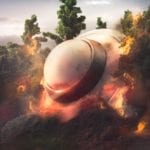 Weird Stuff
Weird Stuff  Weird Stuff
Weird Stuff  Our World
Our World 10 Ways Your Christmas Tree Is More Lit Than You Think
 Movies and TV
Movies and TV The 10 Coolest Stars to Set Sail on The Love Boat
 History
History 10 Things You Didn’t Know About the American National Anthem
 Technology
Technology Top 10 Everyday Tech Buzzwords That Hide a Darker Past
 Humans
Humans 10 Everyday Human Behaviors That Are Actually Survival Instincts
 Animals
Animals 10 Animals That Humiliated and Harmed Historical Leaders
 History
History 10 Most Influential Protests in Modern History
 Creepy
Creepy 10 More Representations of Death from Myth, Legend, and Folktale
 Technology
Technology 10 Scientific Breakthroughs of 2025 That’ll Change Everything
 Weird Stuff
Weird Stuff Ten Bizarre Facts About The Doge Meme
 Our World
Our World 10 Ways Your Christmas Tree Is More Lit Than You Think
 Movies and TV
Movies and TV The 10 Coolest Stars to Set Sail on The Love Boat
Who's Behind Listverse?

Jamie Frater
Head Editor
Jamie founded Listverse due to an insatiable desire to share fascinating, obscure, and bizarre facts. He has been a guest speaker on numerous national radio and television stations and is a five time published author.
More About Us History
History 10 Things You Didn’t Know About the American National Anthem
 Technology
Technology Top 10 Everyday Tech Buzzwords That Hide a Darker Past
 Humans
Humans 10 Everyday Human Behaviors That Are Actually Survival Instincts
 Animals
Animals 10 Animals That Humiliated and Harmed Historical Leaders
 History
History 10 Most Influential Protests in Modern History
 Creepy
Creepy 10 More Representations of Death from Myth, Legend, and Folktale
 Technology
Technology 10 Scientific Breakthroughs of 2025 That’ll Change Everything
10 More Lesser-Known Friday the 13th Events
Happy Friday the 13th for tomorrow, the second one of 2012. The year 2012 is one of the rare years in which there are three Friday the 13ths – January, April, and July. That combination of a year where Friday the 13th happens three times in January, April, and July only happens on leap years. In January we celebrated this event with a list of ten lesser-known Friday the 13th events and here is another list in time for our second unlucky Friday of the year. As with the January list, this list will focus on ten of the lesser-known events that occurred on Friday the 13th.
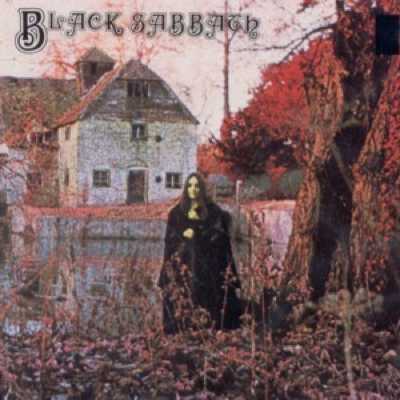
On Friday February 13, 1970, Black Sabbath released their first album in the United Kingdom. Given only two days of studio time to record it, the band played all of the songs live, saving the second day to mix what they had recorded. The album “Black Sabbath” went on to reach #8 on the UK album charts and when released in the USA, it reached #23 on the Billboard charts. The album remained in the Billboard charts for over a year and was a commercial (though not a critical) success. The album went on to earn platinum selling status in both the US and the UK. The band wasted no time capitalizing on the success of their first album and were back in the studio in June 1970 to record their second album “Paranoid” which had the hit single of the same name.
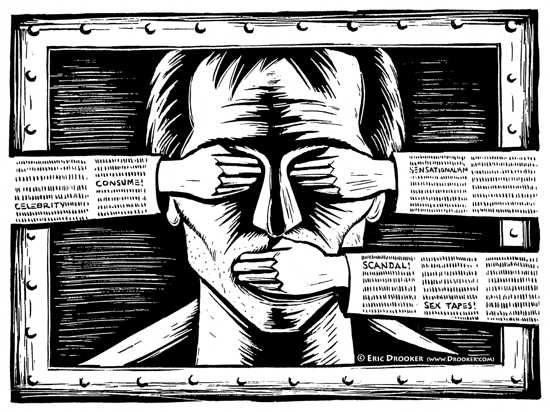
On Friday January 13, 1988, the US Supreme Court handed down a ruling in the case Hazelwood School District et al. v. Kuhlmeier et al. that gave public school administrations broad power to censor school newspapers. In a 5-3 decision, the Supreme Court ruled that student newspapers not established specifically for the purpose of providing students with a forum for free expression, are subject to lower levels of First Amendment protection. Thus the court allowed public schools to put restrictions on what could appear in school-sponsored student publications.
In the case in question, a public school in Missouri published a school paper (The Spectrum) that was fully paid for and supported by the school district. The issue had stories on teen pregnancy and divorce which the school principal felt needed to be removed. When these stories were removed, three of the students sued claiming the decision to remove the articles from the paper violated their First Amendment rights. The Supreme Court held that “the First Amendment protection for student expression described did not compel a public school to affirmatively sponsor speech that conflicts with its “legitimate pedagogical goals.” The school-financed newspaper at issue was also not considered to be a public forum under the totality of circumstances present in the case, and therefore, its editors were entitled to a lower level of First Amendment protection than is applicable to independent student newspapers or those newspapers that have, by policy and practice, opened their page to student opinion.” Source – Wikipedia.
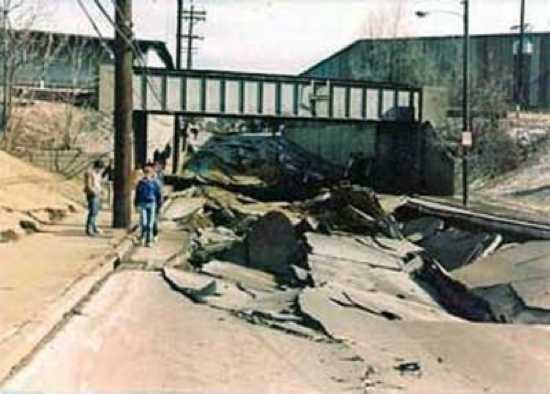
On Friday February 13, 1981, in the city of Louisville Kentucky, it seemed like the city was under attack. A series of underground explosions in the city’s sewer system destroyed more than two miles of streets. Somehow, there were no fatalities but the damage was so extensive the National Guard was called in.
It began around 5:15 a.m. on the morning of Friday the 13th when a spark from a car at the intersection of 12th and Hill streets ignited flammable vapors in the sewer system. Two women on their way to work at the local hospital were driving under the railroad overpass when the sparks from their car ignited the vapors. The force of the explosion hurled the car onto its side but neither occupant was killed. Overhead, a police helicopter happened to be traveling above the city. What they saw was incredible – a series of explosions like demolitions detonating up and down city streets, one after the other. The pilot described what they saw as looking like “a bombing run.” More than two miles of streets were left with craters where manhole covers for the sewer had once been. Many business and homes were damaged by the explosions.
The source of the blast was traced back to hexane vapors, which had been illegally discharged by a Ralston-Purina soybean processing plant. The hexane (which is a solvent) was used in the processing of the soybeans and the plant had a system to recover and reuse the hexane. However, that night, the system was broken and hundreds if not thousands of gallons of the hexane went into the public sewer system. Inside the sewers, the vapors from the hexane accumulated and reached an explosive mixture with air. The flammable and explosive vapors came out of the manhole covers and all it needed was a spark to set it off. Ralston-Purina would later pay $18 million to the city and $9 million to the people of Louisville.
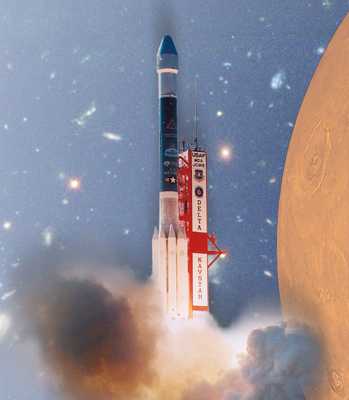
In 1960 the United States was rushing to catch up to the Russians in the space race. That year, the US introduced the Delta family of rockets meant to be the backbone of the US military, commercial, and space exploration business. The Delta rockets were designed to be versatile, expendable launch vehicles that could be used to launch different size and weight satellites and other hardware into different levels of orbit. The first launch of a Delta rocket was scheduled for Friday, May 13, 1960. Perhaps they should have waited until Saturday?
That day, the Delta rocket was set to launch the first US experimental communications satellite called Echo. Echo was essentially a large metal-covered balloon that would circle the Earth and be able to bounce communication signals from one area to another.
On May 13, 1960, at Cape Canaveral, the launch took place. The first stage of the multi-stage rocket worked fine and the vehicle rose off the launch pad. However, troubles developed with the second stage of the rocket and the Echo satellite never reached the intended orbit. Echo only orbited the Earth for a few months.
In spite of the dubious beginning, the Delta rocket has proven to be remarkably successful. Over 300 Delta rockets have been launched since 1960 with a 95% success rate. The Delta II and Delta III launch systems are still in use today.
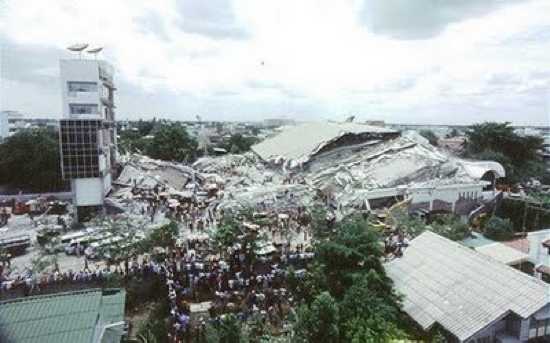
On Friday August 13, 1993, the Royal Plaza Hotel in the city of Nakhon Ratchasima, Thailand, collapsed killing 137 people and injuring 227.
Thought to be the finest hotel in the city of Nakhon Ratchasima, the Royal Hotel was hosting several large conferences for teachers and oil company workers that day. At around 10:10 a.m., the building suddenly and quickly collapsed. The entire collapse was estimated to have taken less than 10 seconds as all of the upper floors fell down onto the lower floors.
In 1990, the then three-story building was renovated and three additional stories were added to the building. The three additional stories were added without permit and without strengthening the support structure of the building. Somehow, the building stayed vertical for three years. Eventually, the lower ground floor support structure weakened beyond the point it could hold the force of the five stories above it. This led to an almost completely vertical collapse of the building.
The engineer who designed the additional floors was arrested and jailed. Safety inspectors had taken bribes to allow the construction to take place. Remarking on the lack of safety and regulations, corruption, bribery and building construction in Thailand, the Prime Minister, Chuan Likphai noted, “It seems we Thais do not respect regulations and this has resulted in frequent problems.”
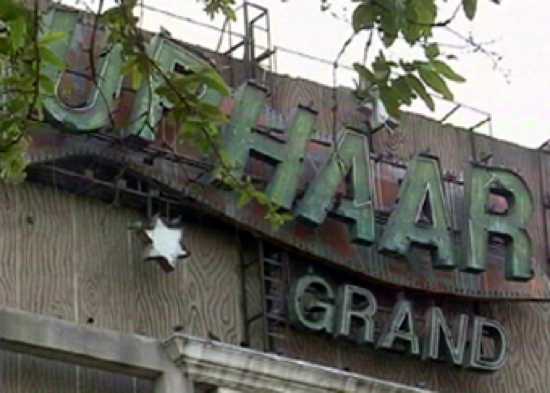
A terrible tragedy occurred in Delhi, India on Friday June 13, 1997, when the Uphaar Cinema building caught fire. The resulting fire and stampede killed 59 people and injured another 103.
The multi-floor theater was packed with a crowd to see the Hindi movie “Border” when the fire stared at around 5:00 p.m. Below the theater was a parking garage and though it was capable of handling 18 cars, 36 cars were crammed into the space. Also in the basement-parking garage was a 1000 kVA electrical transformer. Earlier that day, the transformer had caught fire but the fire was put out and repairs made. At around 5:00 p.m. however, the transformer began to leak oil and this ignited. Quickly the cars in the garage also caught fire. The fire then spread to the rest of the five-story structure, which housed the cinema and offices. Most of the victims were trapped on the balcony, unable to reach dimly marked exits, and crushed by the stampede of people who found some of the exits were locked. Due to a similar transformer fire incident 14 years earlier, the licenses for 12 cinemas, including the Uphaar, had been canceled due to multiple serious safety violations. However in those 14 years between the citation and the deadly fire, none of the safety violations had been corrected.

It was Curt Flood who in 1970 first challenged baseball’s reserve clause, the contract provision that kept players indentured to a single team. Flood lost both a Supreme Court case and his career. But his sacrifice allowed Jim “Catfish” Hunter to rack up a win. On Friday December 13, 1974, just months after Hunter’s Oakland A’s had won the World Series, an arbitrator ruled that by breaching part of Hunter’s contract, A’s owner Charles O. Finley had invalidated the entire contract, including the reserve clause.
Hunter had a contract with the Athletics that stipulated the team make a payment into an insurance fund. A’s owner Charles Finley refused to pay the money. Hunter challenged this and the arbitrator decided in his favor. By ruling that the contract and the reserve clause in the contract were void, as a result of Finley refusing to pay the insurance cost, the arbitrator set Hunter free of the Athletics, making him the first free agent in baseball history. Hunter would go on to sign a $3.75 million contract with the New York Yankees which at the time ranked as the largest in baseball’s history.
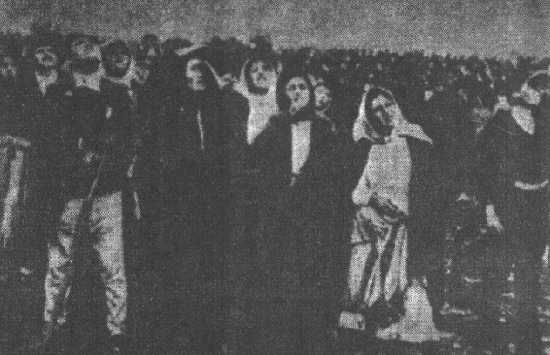
On Friday May 13, 1917 the first apparition of the Virgin Mary appeared to three shepherd children in the village of Fatima Portugal. The three children were Lúcia dos Santos and her cousins Jacinta and Francisco Marto. While tending sheep in the fields outside the village the children reported seeing a woman dressed in white and “brighter than the sun, shedding rays of light clearer and stronger than a crystal ball filled with the most sparkling water and pierced by the burning rays of the sun.” The woman asked the children to return to the spot at the same time every 13th of the month for the next six months. As this was the time of the horrors of World War One, she then added, “Recite the rosary every day to obtain peace in the world and the end of the war.”
In total there were six apparitions of the Virgin Mary from May 13 to October 13, 1917. After the first apparition, the children returned on June 13th, this time with hundreds of believers. After the people prayed, the Virgin Mary reappeared before Lucy and announced to Lucy: “I will soon take Francisco and Jacinta to heaven, but you will remain here for some time. Jesus wants to use you to make me known and loved.” Both Francisco and Jacinta would be dead within three years time. Both children died during the 1918-1920 pandemic flu outbreak.
During the July 13th apparition, the Virgin Mary reveled herself to and spoke to Lucy once again (the crowd of people, estimated to be 4,000 or more, could not see or hear her, only Lucy). She told Lucy: “I want you to continue to say your rosary every day in honor of Our Lady of the Rosary to obtain the end of the war and peace in the world”. She also told Lucy three prophecies that Lucy was to keep secret for some time. Two of these secrets were disclosed in 1942, the third in 2000. These secrets became known as the Three Secrets of Fátima.
On October 13, 1917, during the final visitation, there occurred “The Miracle of the Sun.” This was the miracle the Virgin Mary had predicted she would unfold to cause unbelievers to believe. A crowd estimated to be 30,000 strong was at the site of the previous apparitions when many witnesses saw unusual affects on and of the sun. There was a brief period of rain, then the clouds broke, and when the sun reappeared it was seen as an opaque, spinning disc giving off many colors on the ground, the people, and the clouds. Many thought it was a sign of the end of the world, others reported the sun zigzagged through the sky. Still others claimed their clothing, which had become wet from the rain, instantly dried and the mud at their feet baked dry.
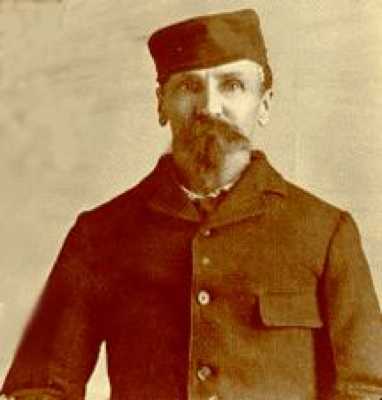
On Friday April 13, 1883, Alfred Packer was convicted of murder and sentenced to death for allegedly killing and eating five people. He was one of only two Americans ever convicted of the crime of cannibalism. Later his crime was lowered to manslaughter and he was sentenced to 40 years in prison.
In late November 1873, Packer and five other men, Shannon Wilson Bell, James Humphrey, Frank Miller, George Noon and Israel Swan, broke off from a larger party of prospectors heading into the mountains of Colorado near Breckinridge to prospect for gold. In January 1874 the men consulted with a well-known Indian familiar with their destination who advised the men to wait until spring before setting off to avoid the deadly winter months. They ignored his advice and set off into the mountains headed for Gunnison Colorado on February 9th, 1874. Quickly the men became lost and ran out of provisions. Packer later claimed that he went off scouting for food and when he returned to camp he found Bell roasting human meat over the fire. Packer claimed Bell rushed him with a hatchet in hand. Packer shot him dead. He then ate the other men and in mid April finally wandered into Gunnison. There he was arrested and tried for the murder of the five men, and eating them for food. Though he claimed he did not kill the men, he did admit to eating them, and eventually signed a confession.
Packer would escape prison, be recaptured, and then paroled by the Governor in 1901. He died in 1907. His legend lived on though. He was once quoted as having said, in jest, “the breasts of man… are the sweetest meat I ever tasted.”
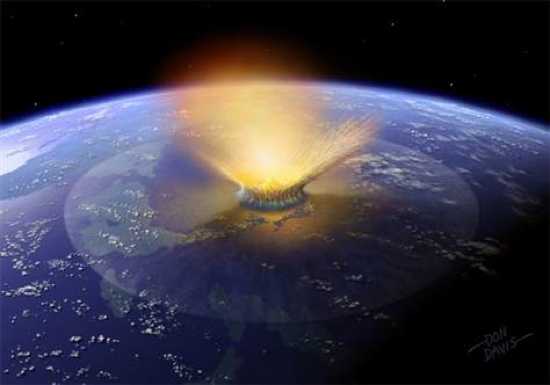
The asteroid Apiophis is named after a mythological Egyptian god of evil who was determined to cast the world into darkness. It appears the asteroid was appropriately named. On Friday April 13, 2029, Apiophis (which is the size of The Rose Bowl, about 1,100 feet across) will come closer to the Earth than the orbit of satellites (at a distance of only 18,000 miles from Earth). Though it will be closer to Earth than many satellites, fortunately, it will come in towards the Earth at an angle that keeps it out of the densely populated Earth satellite region and collisions with satellites should not occur. The asteroid will be close enough to Earth that, even in daylight, observers will see a bright object move across the sky. If the asteroid enters a specific trajectory known as “they keyhole” then the influence of Earth’s gravity will ensure that the asteroid heads off towards the Sun on a trajectory that will guarantee it will strike the Earth the next time it comes around the Sun and approaches our planet. Seven years after that close Earth approach, should the asteroid go through “the keyhole,” Apiophis will hit the Earth in the year 2036. Should it miss the keyhole, the asteroid will not hit the Earth in 2036.
However, should Apiophis collide with the Earth, it will cause major damage. The impact would be the equivalent of 100,000 nuclear bombs and would destroy thousands of square miles. Should it land in the ocean, the resulting tsunami would devastate coastal areas. Let us hope Friday the 13th of April 2029 is a lucky, and not an unlucky Friday the 13th.





